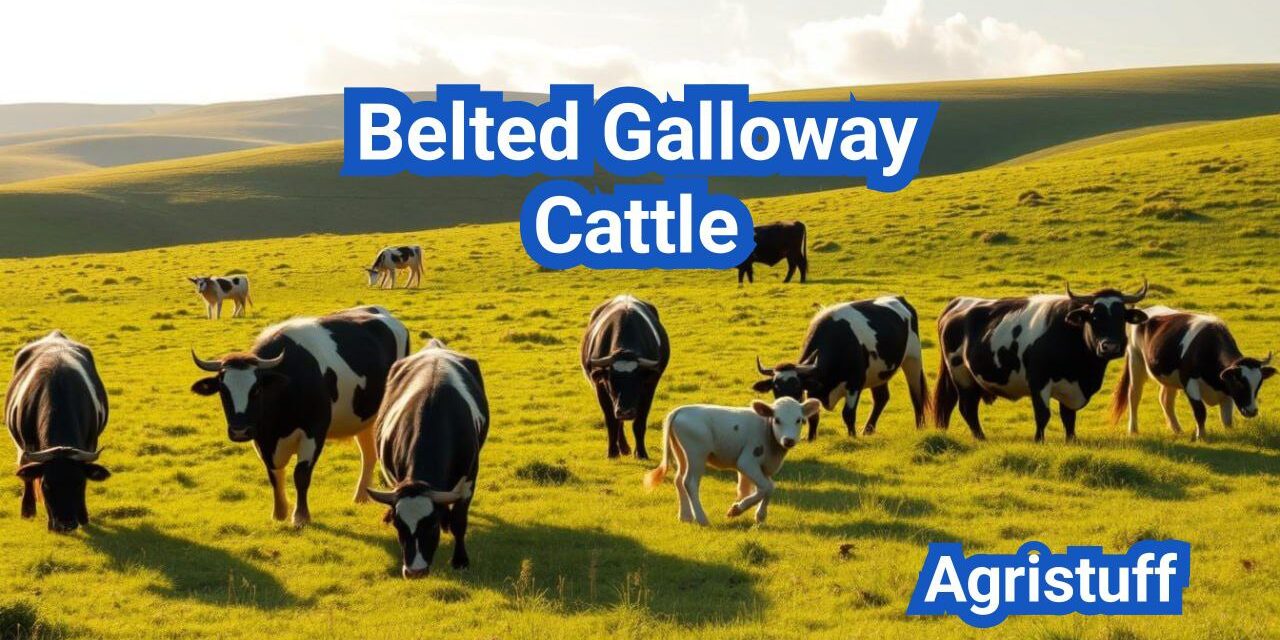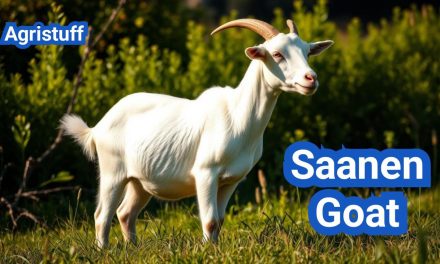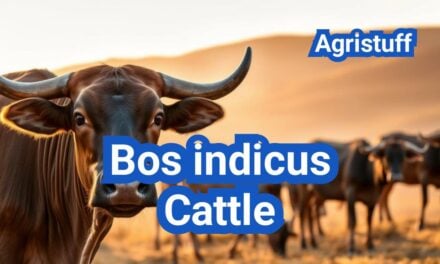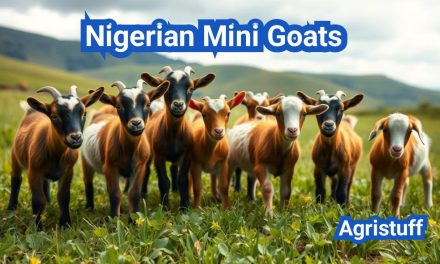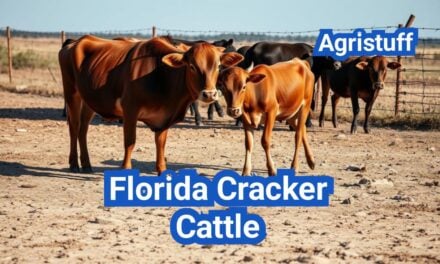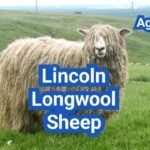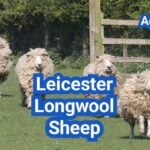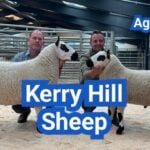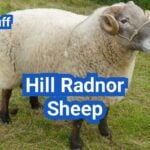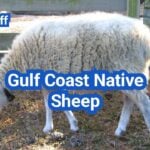The Belted Galloway is a traditional Scottish breed of beef cattle that originated in the Galloway region of southwestern Scotland.
This heritage breed has a rich history and is known for its distinctive characteristics, making it a popular choice among cattle breeders.
The breed’s development and significance will be explored in this article, providing a comprehensive understanding of the Belted Galloway Cattle breed.
Key Takeaways
- The Belted Galloway is a traditional Scottish breed of beef cattle.
- The breed originated in the Galloway region of southwestern Scotland.
- Belted Galloway cattle are known for their distinctive characteristics.
- The breed has a rich history and is a popular choice among cattle breeders.
- The breed’s development and significance will be explored in this article.
The Rich Heritage of Belted Galloway Cattle
The Belted Galloway breed boasts a rich history that spans centuries, originating in the rugged landscapes of Scotland. This heritage breed has been shaped by the country’s agricultural practices and climate, resulting in a robust and adaptable cattle breed.
Scottish Roots and Development
The Belted Galloway breed has its roots in the Galloway region of Scotland, where it was developed as a hardy and versatile cattle breed. The region’s challenging climate and terrain played a significant role in shaping the breed’s characteristics, such as its distinctive white belt and double coat system.
The breed’s development was influenced by the agricultural practices of the time, with farmers selecting for traits that would enhance the cattle’s ability to thrive in the local environment. This selective breeding resulted in a cattle breed that was not only resilient but also well-suited to the region’s farming needs.
Introduction to North America
The Belted Galloway breed was introduced to North America in the 1940s, marking a significant milestone in the breed’s history. The introduction was driven by the desire to bring new genetics and characteristics to the North American cattle industry.
The breed quickly gained popularity among farmers and ranchers, who were drawn to its hardiness, fertility, and the quality of its beef. The Belted Galloway’s ability to thrive in a variety of environments made it an attractive choice for those looking to establish or improve their cattle operations.
Evolution of the Breed Over Time
Over time, the Belted Galloway breed has continued to evolve, influenced by changing agricultural practices, market demands, and the introduction of new breeding stock. Despite these changes, the breed has retained its core characteristics, such as its distinctive appearance and hardy nature.
The breed’s evolution has been shaped by the efforts of breeders and farmers, who have worked to maintain the breed’s integrity while also improving its performance and productivity. Today, the Belted Galloway is recognized as a valuable and versatile cattle breed, suitable for a wide range of farming and ranching applications.
Origin and Historical Significance
The history of Belted Galloway cattle is deeply intertwined with the agricultural heritage of Scotland. This breed has not only thrived in the challenging Scottish environment but has also played a significant role in the country’s farming history.
The Galloway Region of Scotland
The Galloway region, with its fertile lands and rugged terrain, provided an ideal environment for the development of the Belted Galloway breed. The region’s climate, characterized by cool summers and mild winters, allowed these cattle to flourish. The breed’s hardiness and adaptability were crucial in shaping its distinctive characteristics.
Development of the Distinctive Belt
The Belted Galloway’s most striking feature is its white belt, which encircles its body. The development of this characteristic is believed to have occurred over centuries, with the exact origin unknown. However, it is thought that the belt may have been a result of selective breeding practices that emphasized this unique trait.
The white belt not only adds to the breed’s aesthetic appeal but also serves as a distinguishing feature that sets it apart from other cattle breeds.
Historical Uses in Scottish Agriculture
Belted Galloway cattle were highly valued in Scottish agriculture for their hardiness, beef production, and ability to thrive in challenging environments. They were used for draft purposes and provided a source of meat for local communities.
Their role in Scottish agriculture was multifaceted, contributing to the sustainability of farms through their meat, milk, and labor. The breed’s ability to forage efficiently and withstand harsh weather conditions made it an ideal choice for Scottish farmers.
Distinctive Physical Characteristics of Belted Galloway Cattle

Belted Galloway cattle are easily identifiable due to their distinctive white belt, double coat, and sturdy conformation. These physical traits not only make them visually appealing but also contribute to their hardiness and adaptability.
The Iconic White Belt
The white belt around the midsection of Belted Galloway cattle is perhaps their most recognizable feature. This characteristic belt can vary slightly in width and position but is a consistent trait across the breed. The genetics behind the white belt are fascinating, involving a specific gene that controls the distribution of pigmentation.
The white belt is not only aesthetically pleasing; it also has practical implications. It is a breed standard that is closely adhered to in breeding programs.
Double Coat System
Belted Galloway cattle possess a unique double coat system that helps them withstand harsh weather conditions. The outer coat is long and coarse, while the undercoat is soft and dense. This combination provides excellent insulation against cold temperatures and wet weather.
The double coat is a key factor in the breed’s hardiness and ability to thrive in challenging environments.
Body Structure and Conformation
Belted Galloway cattle have a sturdy build with a deep, compact body and strong legs. Their conformation is well-suited to their original purpose as a hardy, beef-producing breed. The breed’s body structure is designed for efficiency in foraging and resilience in the face of adverse weather conditions.
Weight and Size Specifications
Belted Galloway cattle are generally of moderate size. Cows typically weigh between 900 and 1,300 pounds, while bulls can weigh between 1,700 and 2,000 pounds. Their size and weight make them manageable for a variety of farming operations.
| Category | Weight Range (lbs) |
|---|---|
| Cows | 900-1,300 |
| Bulls | 1,700-2,000 |
The size and weight of Belted Galloway cattle, combined with their other physical characteristics, make them a versatile and valuable breed for many farmers and ranchers.
Belted Galloway Color Varieties
The Belted Galloway breed boasts a diverse palette of colors, making each animal unique. While the white belt around their midsection is a defining characteristic, the base color of these cattle can vary, creating a visually appealing array of individuals within the breed.
Black Belted Galloways
Black is one of the most common colors for Belted Galloway cattle. The black coat provides a striking contrast to the white belt, making these animals stand out. Black Belted Galloways are not only visually appealing but also possess the same hardy characteristics as other color varieties.
Red Belted Galloways
Red Belted Galloways offer a warm, earthy tone that is quite distinctive. The red coloration can range from a deep, rich red to a lighter, more golden hue. This variation in shade adds to the breed’s overall visual diversity.
Dun Belted Galloways
Dun is another recognized color for Belted Galloway cattle. Dun Belted Galloways have a lighter, more muted tone compared to black or red, with a characteristic “dun” dilution gene that affects the intensity of their coat color.
Color Genetics and Inheritance
The color of a Belted Galloway is determined by genetics, with different genes controlling the production of black and red pigments. Understanding the genetics behind Belted Galloway colors can help breeders predict the color of offspring and make informed decisions about their breeding programs.
- The genetics of coat color in cattle involve multiple genes, but the basic colors are controlled by variations in the MC1R gene (for red/black) and the dilution gene (for dun).
- Breeders can use genetic testing to determine the genotype of their cattle for certain color traits.
- The inheritance pattern of the white belt is separate from the base coat color genetics.
In conclusion, the variety of colors within the Belted Galloway breed not only adds to their aesthetic appeal but also reflects the genetic diversity and complexity of the breed.
Temperament and Behavioral Traits

Known for their docility and strong maternal instincts, Belted Galloway cattle exhibit fascinating behavioral traits. Their temperament is one of the key factors that make them a popular choice among cattle breeders and farmers.
Natural Disposition
Belted Galloway cattle are generally known for their calm and gentle nature. They are often described as having a docile temperament, making them easy to handle and manage. This natural disposition is beneficial for farmers, as it reduces the risk of injury to both humans and animals during handling.
Maternal Instincts
One of the standout characteristics of Belted Galloway cattle is their strong maternal instincts. Cows are known to be protective of their calves, ensuring their safety and well-being. This trait is invaluable in a breeding program, as it contributes to higher survival rates among calves.
Herd Behavior
Belted Galloway cattle are social animals that thrive in a herd environment. They exhibit typical herd behavior, with a clear hierarchy within the group. This social structure helps in maintaining order and reducing stress among the animals.
Working with Belted Galloways
The temperament and behavioral traits of Belted Galloway cattle make them relatively easy to work with. Their calm nature and strong maternal instincts contribute to a stress-free environment for both the cattle and the farmers. As noted by cattle breeders, “Belted Galloways are not only beautiful to look at, but they are also a joy to work with due to their gentle disposition.”
“Their docility and strong maternal instincts make Belted Galloway cattle an excellent choice for farmers looking for a breed that is both hardy and easy to manage.”
In conclusion, the temperament and behavioral traits of Belted Galloway cattle are significant advantages in cattle breeding and farming. Their natural disposition, maternal instincts, and herd behavior all contribute to their popularity among breeders and farmers.
How to Raise Belted Galloway Cattle
Raising Belted Galloway cattle requires a comprehensive approach that includes adequate land, appropriate shelter, and careful feeding practices. This breed is known for its hardiness and adaptability, but like all cattle, they have specific needs that must be met to ensure their health and productivity.
Land and Space Requirements
Belted Galloway cattle are well-suited to grazing and require substantial land for pasture. A general rule of thumb is to provide at least 1-2 acres per head, depending on the quality of the pasture and the climate. “Grazing is not just about feeding; it’s about managing the land,” says a seasoned cattle farmer. Ensuring adequate space is crucial for maintaining healthy pastures and preventing overgrazing.
The land should be well-drained, as Belted Galloways are susceptible to foot issues if they are in wet conditions for too long. Fencing is also a critical consideration to keep the cattle contained and protect them from predators.
Shelter Considerations
While Belted Galloway cattle are hardy, they still require shelter from extreme weather conditions. A simple three-sided shelter can provide adequate protection from wind, rain, and snow. The shelter should be well-maintained, dry, and ventilated to prevent respiratory issues.
It’s also essential to ensure that the shelter is accessible for all cattle, including younger or weaker animals that may need extra protection. Providing adequate shelter contributes significantly to the overall health and well-being of the cattle.
Feeding Practices
Belted Galloway cattle are known for their ability to thrive on grass, making them ideal for grass-fed beef production. A diet rich in high-quality pasture is essential, and supplementary feeding may be necessary during periods of poor pasture quality or when additional nutritional needs arise, such as during late pregnancy or early lactation.
Feeding practices should be managed carefully to ensure that the cattle receive a balanced diet. This may involve rotational grazing to maintain pasture health and quality. As one expert notes, “Rotational grazing is key to maintaining the health of both the cattle and the land.”
Health Management
Health management is a critical aspect of raising Belted Galloway cattle. Regular veterinary checks, vaccinations, and parasite control measures are essential to prevent disease. Monitoring the cattle’s health daily can help identify any issues early, allowing for prompt intervention.
A well-planned health management program includes regular hoof care, as Belted Galloways can be prone to hoof issues if not properly managed. Working with a veterinarian to develop a health plan tailored to the specific needs of your herd is crucial.
In conclusion, raising Belted Galloway cattle requires careful consideration of their land, shelter, feeding, and health needs. By understanding and meeting these needs, farmers can ensure the health and productivity of their cattle, contributing to a successful and sustainable farming operation.
Breeding Belted Galloway Cattle

Breeding Belted Galloway cattle is a nuanced process that demands attention to detail and a commitment to preserving the breed’s integrity. This process involves several critical components, including selecting appropriate breeding stock, leveraging calving ease advantages, employing effective crossbreeding strategies, and considering genetic factors.
Selecting Breeding Stock
Selecting the right breeding stock is fundamental to successful Belted Galloway cattle breeding. This involves evaluating potential breeding animals for desirable traits such as robust health, genetic diversity, and conformity to breed standards. Genetic diversity is particularly important as it helps maintain the breed’s hardiness and adaptability.
- Evaluate animals for health and genetic diversity
- Assess conformity to breed standards
- Consider the animal’s temperament and maternal instincts
Calving Ease Advantages
Belted Galloway cattle are known for their calving ease, a trait that significantly benefits breeding programs. This characteristic reduces the need for veterinary interventions during calving, thereby improving calf survival rates and minimizing stress on the dam. The breed’s natural calving ability is a result of generations of selection for this trait.
Crossbreeding Strategies
Crossbreeding can be an effective strategy for introducing new traits into a Belted Galloway breeding program. By crossing Belted Galloways with other breeds, breeders can enhance certain characteristics, such as growth rate or milk production, while retaining the hardiness and adaptability of the Belted Galloway. However, careful consideration must be given to the potential impacts on the breed’s distinctive traits.
- Identify the goals of the crossbreeding program
- Select appropriate breeds for crossing
- Monitor the outcomes to ensure desired traits are achieved
Genetic Considerations
Genetic considerations play a crucial role in breeding Belted Galloway cattle. Breeders must be aware of the potential for genetic disorders and work to maintain genetic diversity within their herds. This involves careful selection of breeding stock and, where possible, the use of genetic testing to identify carriers of undesirable traits.
By understanding and applying these principles, breeders can develop successful breeding programs that enhance the quality and sustainability of their Belted Galloway herds.
Belted Galloway Cattle Registration and Associations

The Belted Galloway Society plays a vital role in the registration and promotion of the breed. As the primary association for Belted Galloway cattle, it oversees the registration process, maintains breed standards, and organizes shows and exhibitions.
The Belted Galloway Society
The Belted Galloway Society is dedicated to preserving and promoting the Belted Galloway breed. It provides a framework for breeders to register their cattle, ensuring that the breed’s unique characteristics are maintained.
Key functions of the Belted Galloway Society include:
- Maintaining the herd book for registered Belted Galloway cattle
- Establishing and enforcing breed standards
- Organizing cattle shows and exhibitions
- Providing educational resources for breeders
Registration Process
The registration process for Belted Galloway cattle involves several steps to ensure that only cattle meeting the breed standards are registered.
The process typically includes:
- Application submission by the breeder
- Verification of the animal’s pedigree and lineage
- Inspection of the animal to ensure it meets breed standards
- Issuance of a registration certificate
Breed Standards
Breed standards for Belted Galloway cattle are crucial for maintaining the breed’s integrity. These standards cover various aspects, including:
- Coat color and pattern
- Body conformation and size
- Horn status
- Temperament
Shows and Exhibitions
Cattle shows and exhibitions provide a platform for breeders to showcase their Belted Galloway cattle. These events help promote the breed and allow breeders to compare their animals against the breed standards.
Benefits of participating in cattle shows include:
- Opportunities to network with other breeders
- Feedback from judges on animal quality
- Promotion of the breed to potential buyers
- Opportunities to win awards and recognition
Belted Galloway vs. Traditional Galloway Cattle

Belted Galloway and traditional Galloway cattle, while sharing a common heritage, exhibit distinct differences that set them apart in the world of cattle breeding.
Genetic Differences
The primary genetic difference between Belted Galloway and traditional Galloway cattle lies in the gene that controls the white belt characteristic. Belted Galloways have a specific gene that gives them their iconic white belt, whereas traditional Galloways do not possess this trait.
According to a study published in the Journal of Animal Science, the genetics behind the belted trait in Belted Galloway cattle is attributed to a single gene with a dominant allele. This genetic distinction is a key factor in differentiating the two breeds.
“The belted trait in cattle is a result of a genetic variation that has been selectively bred in Belted Galloway cattle.”
Physical Distinctions
One of the most noticeable physical distinctions between the two breeds is the presence of the white belt in Belted Galloways. Traditional Galloways, on the other hand, come in various colors such as black, red, and dun, but lack the distinctive white belt.
The body structure and conformation of both breeds are similar, with both being known for their robust build and hardiness. However, the visual appeal of the Belted Galloway, with its striking white belt, often makes it a favorite among cattle enthusiasts.
Performance Comparisons
In terms of performance, both breeds are known for their hardiness and ability to thrive in various conditions. However, Belted Galloways are often praised for their docile nature and ease of handling, making them a popular choice for farms and ranches.
| Characteristic | Belted Galloway | Traditional Galloway |
|---|---|---|
| Hardiness | High | High |
| Temperament | Docile | Generally Docile |
| Distinctive Feature | White Belt | No White Belt |
Choosing Between the Breeds
When deciding between Belted Galloway and traditional Galloway cattle, breeders should consider factors such as the desired appearance, temperament, and specific needs of their farm or ranch.
Key Considerations:
- Visual appeal and market demand
- Temperament and handling ease
- Genetic diversity and breed purity
- Adaptability to local climate and conditions
Ultimately, the choice between Belted Galloway and traditional Galloway cattle depends on the individual needs and preferences of the breeder.
Belted Galloway Beef Production

Belted Galloway cattle are renowned for their superior beef, which is rich in flavor and tender in texture. The breed’s unique characteristics, such as its hardiness and ability to thrive on grass, make it an ideal choice for producing high-quality, grass-fed beef.
Meat Quality Characteristics
The meat from Belted Galloway cattle is known for its marbling, which enhances its tenderness and flavor. The breed’s genetic predisposition to producing well-marbled meat makes it particularly suitable for premium beef products. Additionally, the cattle’s slow growth rate contributes to the development of complex flavors in the meat.
As noted by beef connoisseurs, “The unique genetic makeup of Belted Galloway cattle results in beef that is not only tender but also rich in umami flavors, making it a favorite among chefs and food enthusiasts.”
This characteristic is a significant selling point for producers looking to differentiate their products in a competitive market.
Grass-Fed Advantages
One of the key advantages of raising Belted Galloway cattle is their ability to thrive on grass, making them ideal for grass-fed beef production. Grass-fed beef from Belted Galloway cattle is not only more sustainable but also offers a more natural and healthier alternative to grain-fed beef. The breed’s hardiness and adaptability to various grazing conditions further enhance the viability of grass-fed production systems.
Marketing Belted Galloway Beef
Marketing Belted Galloway beef effectively requires highlighting its unique quality characteristics and the benefits of grass-fed production. Producers can leverage the breed’s heritage and the premium nature of their products to attract consumers willing to pay more for high-quality, specialty beef. Certification programs and labeling can also be used to differentiate Belted Galloway beef in the marketplace.
Freezer Beef Programs
Freezer beef programs offer a convenient way for consumers to purchase Belted Galloway beef directly from producers. These programs allow consumers to buy beef in bulk, which is then stored in their freezers, providing a steady supply of high-quality meat. For producers, freezer beef programs can help reduce marketing costs and improve cash flow by selling larger quantities directly to consumers.
Conservation Grazing with Belted Galloway Cattle

The use of Belted Galloway cattle in conservation grazing initiatives has gained significant attention for its potential to enhance biodiversity and ecosystem health. Conservation grazing is a land management strategy that utilizes grazing animals to promote ecological balance and resilience.
Environmental Benefits
Belted Galloway cattle are well-suited for conservation grazing due to their hardiness and efficient grazing capabilities. Their presence in conservation areas can lead to several environmental benefits, including improved soil health, enhanced biodiversity, and reduced invasive species.
Key environmental benefits:
- Improved soil health through trampling and manure deposition
- Enhanced biodiversity by creating habitat diversity
- Reduced invasive species through targeted grazing
Land Management Applications
Conservation grazing with Belted Galloway cattle can be applied in various land management contexts, including:
- Restoring native grasslands
- Managing invasive species
- Enhancing wetland areas
Implementing Conservation Grazing Programs
To implement a successful conservation grazing program, land managers should consider factors such as stocking rates, grazing duration, and animal health. Monitoring and adaptive management are crucial for achieving the desired ecological outcomes.
| Program Component | Description | Key Considerations |
|---|---|---|
| Stocking Rate | Number of animals per acre | Forage availability, animal health |
| Grazing Duration | Length of grazing period | Ecological goals, animal health |
| Animal Health | Monitoring and maintaining cattle health | Nutrition, veterinary care, handling practices |
Case Studies and Success Stories
Several conservation grazing programs utilizing Belted Galloway cattle have reported significant ecological improvements. These case studies demonstrate the potential for conservation grazing to achieve biodiversity goals and promote ecosystem resilience.
For instance, a conservation project in the northeastern United States used Belted Galloway cattle to manage invasive species in a wetland area, resulting in improved habitat for native wildlife and enhanced ecosystem services.
Belted Galloway Cattle in the United States

In recent years, the United States has seen a growing interest in Belted Galloway cattle, driven by their adaptability and the demand for grass-fed beef. This section will explore the current status of Belted Galloway cattle in the US, including their population and distribution, notable breeders, regional adaptations, and breeding programs.
Population and Distribution
The population of Belted Galloway cattle in the US has been steadily increasing over the years. According to the Belted Galloway Society, the breed is now found in many states across the country, from the traditional cattle-raising areas to new regions where farmers are looking for hardy and efficient breeds.
The distribution of Belted Galloway cattle is influenced by factors such as climate, land availability, and market demand. They are found in diverse environments, from the humid Southeast to the drier climates of the West, demonstrating their adaptability to various conditions.
Notable American Breeders
Several notable breeders have played a significant role in promoting and developing the Belted Galloway breed in the US. These breeders have not only contributed to the genetic diversity of the breed but have also been instrumental in educating the public about the benefits of raising Belted Galloway cattle.
Some of the well-known breeders are recognized for their breeding programs, which focus on improving the breed’s characteristics while maintaining its traditional traits. Their efforts have helped to increase the breed’s popularity and have contributed to the growth of the US Belted Galloway community.
Regional Adaptations
Belted Galloway cattle have shown remarkable adaptability to different regions in the US. Their hardiness and ability to thrive on grass make them an attractive choice for farmers in various parts of the country.
In regions with harsh winters, the breed’s double coat provides excellent protection, while in warmer climates, their ability to forage efficiently makes them a valuable asset. This adaptability has contributed to the breed’s growing popularity across different regions.
American Breeding Programs
American breeding programs for Belted Galloway cattle are focused on maintaining the breed’s traditional characteristics while improving its performance in various environments. Breeders are using selective breeding techniques to enhance traits such as fertility, growth rate, and meat quality.
These breeding programs are crucial for the continued success and growth of the Belted Galloway breed in the US. By focusing on the breed’s strengths and adapting to the needs of the US market, breeders are helping to ensure the long-term viability of the breed.
Adaptability and Hardiness Advantages
With their robust nature and ability to thrive in diverse environments, Belted Galloway cattle stand out for their hardiness and adaptability. This breed has gained popularity worldwide due to its ability to withstand various climates and farming conditions.
Climate Tolerance
Belted Galloway cattle are known for their exceptional climate tolerance. They can thrive in cold, wet climates as well as in more temperate regions. Their double coat system helps them adapt to different temperature conditions, making them suitable for a wide range of geographical locations.
Disease Resistance
Another significant advantage of Belted Galloway cattle is their disease resistance. They have a natural immunity to many diseases, which reduces the need for veterinary interventions and makes them a healthier choice for farming operations.
Foraging Efficiency
The breed is also recognized for its foraging efficiency. Belted Galloway cattle can effectively utilize pasturelands, converting grass into high-quality beef. This efficiency not only benefits farmers economically but also promotes sustainable farming practices.
Sustainability Benefits
Raising Belted Galloway cattle offers several sustainability benefits. Their hardiness and foraging abilities contribute to environmentally friendly farming practices. By requiring less external input (such as feed and veterinary care), they help in maintaining ecological balance and promoting biodiversity.
In conclusion, the adaptability and hardiness of Belted Galloway cattle make them an attractive option for cattle farmers looking for a resilient and sustainable breed.
The Future of Belted Galloway Cattle
The Belted Galloway cattle breed has a rich history and distinct characteristics that make it an attractive choice for sustainable farming practices. As we look to the future, the conservation of this breed is crucial for maintaining biodiversity and promoting ecological balance.
Effective cattle breed conservation efforts will be vital in ensuring the long-term viability of Belted Galloway cattle. This includes adopting sustainable practices, such as conservation grazing, and supporting breeders who prioritize genetic diversity and animal welfare.
The future of Belted Galloway cattle is closely tied to the growing demand for sustainable and environmentally friendly agricultural products. As consumers become more aware of the importance of sustainability, the market for grass-fed beef and other products from this breed is likely to expand.
By embracing sustainable practices and promoting the unique qualities of Belted Galloway cattle, we can work towards a more environmentally conscious and conservation-minded future for this iconic breed.
FAQ
What is the origin of Belted Galloway cattle?
Belted Galloway cattle originated in the Galloway region of Scotland, where they were developed as a hardy and adaptable breed for beef production.
What are the distinctive physical characteristics of Belted Galloway cattle?
Belted Galloway cattle are known for their iconic white belt, double coat system, and sturdy body structure. They come in three main colors: black, red, and dun.
What is the temperament of Belted Galloway cattle like?
Belted Galloway cattle are known for their docile and calm temperament, making them a pleasure to work with. They are also known for their strong maternal instincts and herd behavior.
How do I raise Belted Galloway cattle?
To raise Belted Galloway cattle, you will need to provide adequate land and space, shelter, and a nutritious diet. Regular health checks and management practices are also essential.
What are the benefits of breeding Belted Galloway cattle?
Breeding Belted Galloway cattle offers several advantages, including calving ease, genetic diversity, and the potential for producing high-quality beef.
How do I register my Belted Galloway cattle?
To register your Belted Galloway cattle, you will need to contact the Belted Galloway Society or other relevant breed associations and follow their registration process.
What is the difference between Belted Galloway and traditional Galloway cattle?
The main difference between Belted Galloway and traditional Galloway cattle is the presence of the white belt in Belted Galloways. They also have some genetic and physical differences.
Can Belted Galloway cattle be used for conservation grazing?
Yes, Belted Galloway cattle are well-suited for conservation grazing due to their hardiness, foraging efficiency, and ability to thrive on diverse landscapes.
What are the advantages of Belted Galloway beef?
Belted Galloway beef is known for its high quality, tenderness, and rich flavor. It is often produced using grass-fed methods, which can offer additional nutritional benefits.
Are Belted Galloway cattle adaptable to different climates?
Yes, Belted Galloway cattle are known for their climate tolerance and adaptability, making them suitable for a range of environments and regions.
What are the sustainability benefits of raising Belted Galloway cattle?
Raising Belted Galloway cattle can offer several sustainability benefits, including reduced environmental impact, improved land management, and the potential for carbon sequestration.
How can I market Belted Galloway beef?
To market Belted Galloway beef, you can emphasize its quality characteristics, grass-fed advantages, and the breed’s heritage and uniqueness. You can also consider participating in specialty markets or direct-to-consumer sales.
Conclusion of: Belted Galloway Cattle
Introduction: why Belted Galloway Cattle stand out
Belted Galloway Cattle are instantly recognizable for the striking white “belt” that wraps a dark coat, but the real appeal for U.S. farms is their thriftiness, docility, and performance on grass. From small family homesteads to regenerative beef operations, Belted Galloway Cattle deliver hardy calves, efficient gains, and a marketable story that supports direct-to-consumer sales. Their polled heads, strong feet, and dense double haircoat make Belted Galloway Cattle a practical, low-maintenance choice across a wide range of climates. Breed overview (The Livestock Conservancy)
History and Scottish origin
Belted Galloway Cattle trace to the rugged Galloway region of southwest Scotland, where centuries of selection produced cattle able to thrive on rough, heathered uplands. The distinctive belt most likely entered the gene pool through historic mixing with Dutch “belted” cattle, and over time the belted strain of Galloways became a celebrated type. Today, Belted Galloway Cattle represent both a living heritage and a modern, forage-first beef breed with global reach. History (Belted Galloway Society – UK)
Arrival and growth in the United States
After gaining recognition in Britain, Belted Galloway Cattle spread to North America, where breeders formalized a registry and promoted the breed’s utility in grass-based systems. The Belted Galloway Society in the U.S. supports herd improvement, education, and promotion, helping Belted Galloway Cattle integrate into diversified farms and niche beef programs around the country. History & attributes (Belted Galloway Society – USA)
Breed identity, type, and registration standards
Registration standards ensure Belted Galloway Cattle remain naturally polled, medium-framed, and correctly marked with a distinct, complete white belt. U.S. and UK societies emphasize structural correctness (feet, legs, top line), maternal function, and calm temperament, so Belted Galloway Cattle stay productive and safe to handle. Color is recognized in black, red, and dun with the trademark belt, reinforcing a unique brand identity. Breed characteristics (UK Society)
Coat, hardiness, and climate adaptability
Unlike many beef breeds, Belted Galloway Cattle feature a double haircoat: coarse guard hairs over a soft undercoat that insulates against cold and sheds for summer comfort. This natural insulation reduces the need for heavy fat cover in winter and supports outdoor management. As seasonal coats change, Belted Galloway Cattle adapt to a broad climate range common in U.S. beef regions. Cattle breed resources (Oklahoma State University)
Size, growth, and calving performance
On balanced forage programs, Belted Galloway Cattle typically present moderate mature size, aiding maintenance efficiency and calving ease. Birth weights are generally moderate, and mature cows and bulls stay within manageable ranges for most pasture systems. With sound selection and nutrition, Belted Galloway Cattle wean thrifty calves and maintain excellent longevity in the cow herd. Type & size notes (Belted Galloway Society – USA)
Temperament, fertility, and mothering ability
Producers value Belted Galloway Cattle for calm disposition, fertility, and reliable mothering. Selection guidelines prioritize feminine, capacious cows with strong udders, good feet and legs, and the ability to rebreed promptly. With sensible handling and culling standards, Belted Galloway Cattle remain productive for many seasons, which improves whole-farm economics. Selection guidelines (Belted Galloway Society – USA)
Grazing efficiency and land stewardship
As moderate, “light” grazers, Belted Galloway Cattle are well suited to sensitive pastures and mixed sward conditions where hoof impact matters. Their ability to utilize coarse grasses and browse can support rotational grazing and conservation goals. This makes Belted Galloway Cattle a smart option for regenerative, low-input beef systems across the U.S. Conservation & grazing notes (The Livestock Conservancy)
Beef quality and consumer appeal
Lean, flavorful beef and strong dressing percentages help Belted Galloway Cattle perform in freezer-beef and direct-market channels. The breed’s distinctive look also supports storytelling and brand recognition at the farm gate. With careful finishing, Belted Galloway Cattle deliver cuts that satisfy health-conscious buyers seeking grass-fed beef. Belted Galloway beef overview (Society – USA)
Nutrition profile and carcass data
The Belted Galloway Society has published nutrient composition and fatty-acid analyses comparing Belted Galloway ribeyes with USDA reference values. While outcomes depend on genetics and feeding, the data help position Belted Galloway Cattle as a premium, well-balanced beef option in niche markets. Statistics on Beltie beef (Society – USA)
Breeding objectives and sire selection
Successful programs for Belted Galloway Cattle emphasize structural correctness, maternal function, depth of body, and a clear, complete belt. Bulls should combine muscle expression with breed character, while cows must carry strong udders and sound feet. Over time, disciplined selection improves the uniformity and profitability of Belted Galloway Cattle herds. Practical selection points (Society – USA)
Color genetics and registry conventions
The belt is heritable and strongly expressed; registry conventions in the U.S. and UK codify acceptable markings and colors (black, red, dun). Breed organizations detail how Belted Galloway Cattle are recorded, including appendices and marking codes that maintain breed integrity and traceability. Herd book information (American Galloway Breeders Association)
Records, weights, and objective comparison
Basic performance records help Belted Galloway Cattle reach their potential in pasture-based systems. Standardized weaning weights and simple ratios allow fair calf comparisons across ages and dams. With even modest data, Belted Galloway Cattle breeders can make clearer replacement and sire decisions year over year. Adjusted weights & ratios (Society – USA)
Health considerations and genetic vigilance
As with all purebred populations, managing inherited conditions is prudent for Belted Galloway Cattle. The UK Society highlights alpha-mannosidosis awareness, and responsible breeders use testing and pedigree scrutiny to protect herd health. With due diligence, Belted Galloway Cattle remain robust and long-lived in commercial conditions. Alpha-mannosidosis information (UK Society)
Buying seedstock and building a herd
New buyers should visit herds, evaluate structure and udders, verify belts and temperament, and review basic records before investing in Belted Galloway Cattle. The U.S. Society’s breeder directory is a practical starting point to compare programs, colors, and seedstock goals for Belted Galloway Cattle. Breeders directory (Society – USA)
Marketing channels and brand positioning
Direct-to-consumer, farm store, and CSA models reward the distinct look and story behind Belted Galloway Cattle. Grass-fed, organic, or low-input branding can align with the breed’s strengths and consumer expectations. With consistent finishing and customer education, Belted Galloway Cattle support premium pricing in many U.S. locales. Breed snapshot (The Cattle Site)
Stockmanship, handling, and safety
Calm disposition helps, but all Belted Galloway Cattle benefit from good handling practices that minimize stress and protect workers. Adopting Beef Quality Assurance (BQA) principles—quiet movement, proper facility design, and low-stress techniques—improves meat quality and animal wellbeing. Belted Galloway Cattle respond well to consistent routines and clear flight-zone awareness. Beef Quality Assurance (BQA)
Pasture planning and rotational grazing
Because they excel on forage, Belted Galloway Cattle fit rotational grazing systems that protect plant crowns, build soil, and stabilize gains across seasons. NRCS resources on grazing planning, rest intervals, and water placement can help producers design efficient paddock rotations for Belted Galloway Cattle. NRCS grazing management resources
Grass finishing and nutrition
Finishing Belted Galloway Cattle on high-quality pastures demands attention to forage density, energy balance, and seasonal transitions. Extension-style checklists for pasture-finished beef can guide body condition targets, mineral programs, and slaughter timing so Belted Galloway Cattle grade consistently for customers. Grass-finished beef guide (ATTRA/NCAT)
Comparing Belted Galloway Cattle with solid Galloways
Functionally, Belted Galloway Cattle share many strengths with solid-colored Galloways—maternal efficiency, grazing ability, and hardiness—while adding the striking belt that enhances market recognition. For U.S. ranches, that means similar management but potentially stronger branding opportunities with Belted Galloway Cattle. Galloway family background (Oklahoma State University)
Getting started checklist
Before purchase, outline forage availability, wintering strategy, and sales channel; then shortlist herds whose cattle match your goals for Belted Galloway Cattle. On farm visits, assess structure, udders, belts, temperament, and records. Keep selection disciplined so your Belted Galloway Cattle herd compounds genetic gains each calf crop. Simple record tools (Society – USA)
Final thought
Belted Galloway Cattle combine rugged thrift with unmistakable looks, making them ideal for pasture-based beef and story-driven marketing in the U.S. With sound selection, steady records, and thoughtful grazing, Belted Galloway Cattle can anchor resilient, profitable herds that delight customers and conserve land. Why Belties fit forage-first beef (Society – USA)
Sources & References
- Belted Galloway Society (USA) — Guidelines for Selecting
- Belted Galloway Society (USA) — Calculating Adjusted Weights
- Belted Galloway Society (USA) — Belted Galloway Beef
- Belted Galloway Society (UK) — History
- Belted Galloway Society (UK) — Breed Characteristics
- American Galloway Breeders Association — Herd Book Information
- The Livestock Conservancy — Belted Galloway Cattle
- The Cattle Site — Belted Galloway
- Beef Quality Assurance (BQA)

